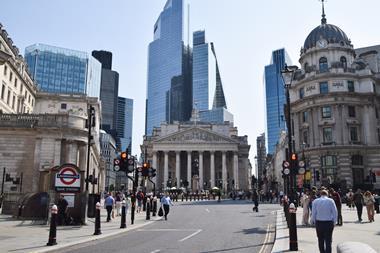Introduction
Scientists believe that dangerous, long-term changes are taking place in our climate. Businesses, on the other hand, are concerned about how events like windstorms and floods will affect them during their next reporting periods, which might be as short as three months. Weather is the intersection between climate change and insurance.
Hurricane forecasting illustrates the difficulty. Scientists believe that they can forecast the number of tropical storms in a season with reasonable accuracy; what they cannot do is predict how many hurricanes in a year will make landfall, and there is little implication for insurance when the storms remain at sea, as the 2006 and 2007 seasons have shown.
But our understanding of each these processes is moving closer together, as the discussion at our conference Insuring Climate Change revealed. The insurance industry clearly expects that we will see more extreme and more changeable weather as historic greenhouse gas levels feed into our complex climate and weather systems, a process which scientists believe we cannot reverse for some years. And the effects of climate change will be superimposed on the normal cyclicality of the weather.
The new millennium has already shown us freak weather. In 2007, the UK suffered its worst flooding for many years and the wettest summer months since records began in 1766. Southern and southeastern Europe recorded unprecedented summer temperatures and forest fires. Oman experienced its first ever cyclone. There were forest fires in California, tornadoes in Florida and two category five hurricanes in the Gulf of Mexico.
In June 2005, before Hurricane Katrina or this year’s flooding, the Association of British Insurers released a report on the financial risks of climate change. Its experts predicted that by the 2080s the annual cost of storms could be $27bn. ind damage losses from the most extreme hurricanes could total $100bn-$150bn. Insurers’ capital requirements could increase by over 90% for US hurricanes, and by around 80% for Japanese typhoons. The costs of flooding in Europe could go as high as $120bn-$150bn in a year.
The insurance and risk management industry has a great challenge on its hands. Predicting the effects of climate change remains full of uncertainty, even for scientists and catastrophe modellers.
Insurers and reinsurers also have knowledge that they can share from their understanding of how extreme weather affects people, businesses and economies. By taking part in public initiatives, such as the United Nations Environmental Programme (UNEP) Finance Initiative and the UK’s ClimateWise, the industry is contributing toward the sustainability of the planet and its own business.
Downloads
Insuring Climate Change
PDF, Size 2.3 mb
Postscript
Lee Coppack, editor Catastrophe Risk Management
Helen Yates, editor Global Reinsurance
Hosted by comedian and actor Tom Allen, 34 Gold, 23 Silver and 22 Bronze awards were handed out across an amazing 34 categories recognising brilliance and innovation right across the breadth of UK general insurance.










































